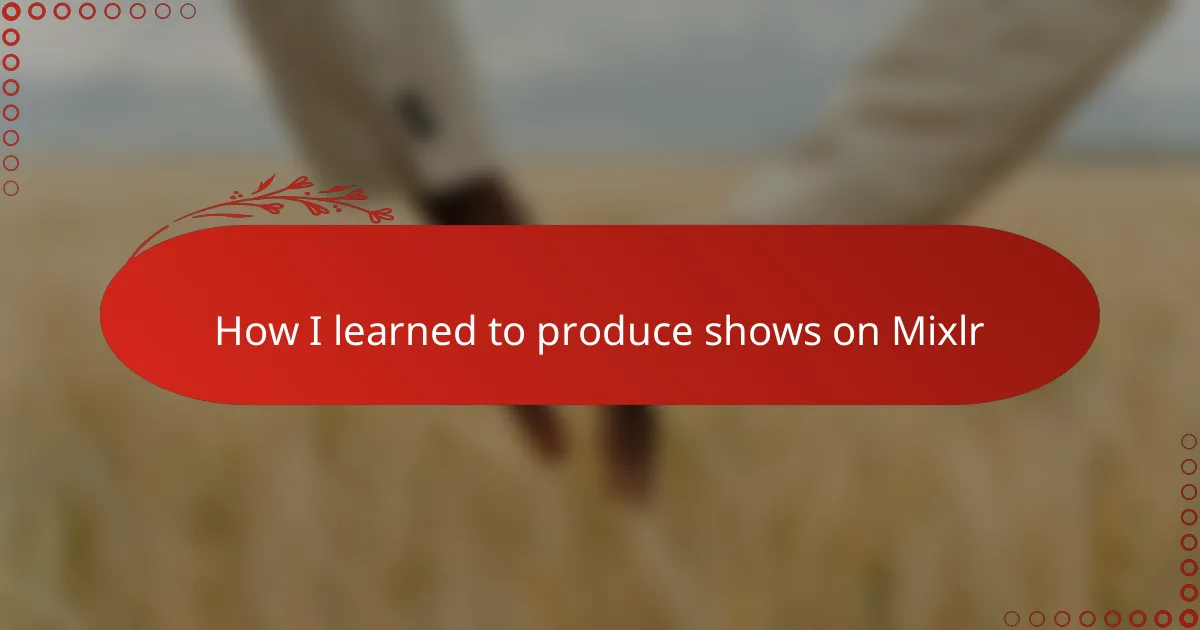Key takeaways
- Radio broadcasting fosters a unique connection with audiences, creating an intimate experience through voice and delivery.
- Online platforms like Mixlr have revolutionized broadcasting, offering customizable features and real-time engagement opportunities.
- Essential equipment like a quality microphone, headphones, and a stable internet connection is crucial for producing a polished show.
- Engaging storytelling, natural pauses, and audience interaction are key strategies for maintaining listener interest and building community.
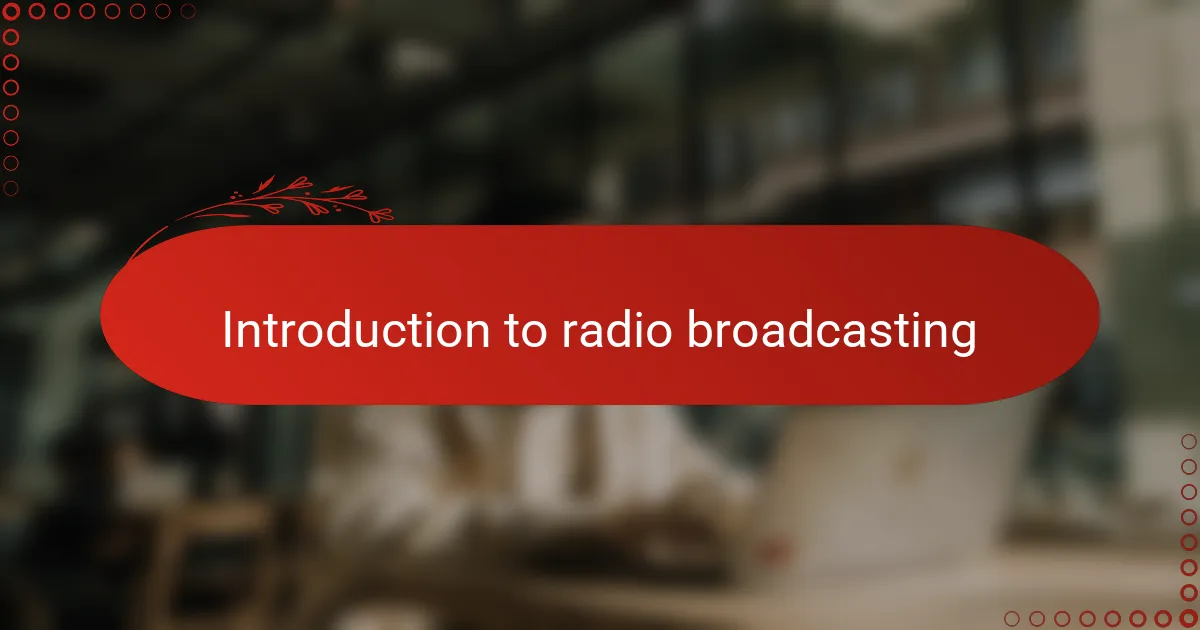
Introduction to radio broadcasting
Radio broadcasting has always fascinated me because it combines creativity with connection. I often wonder, what is it about hearing a voice over the airwaves that feels so intimate, even when you know thousands are listening? To me, it’s like having a conversation with the world, one that can entertain, inform, and inspire.
When I first dipped my toes into radio, I was amazed at the power of a well-crafted show to bring stories and music to life. The magic isn’t just in the content; it’s in how it’s delivered—the pacing, the tone, the pauses. These elements turn a simple broadcast into a personal experience.
Thinking back, radio broadcasting is more than just technology or equipment; it’s about building a relationship with your audience. Have you ever realized how a radio host’s voice can feel like a friend’s? That connection is what makes radio so enduring and why I became so passionate about learning the craft.
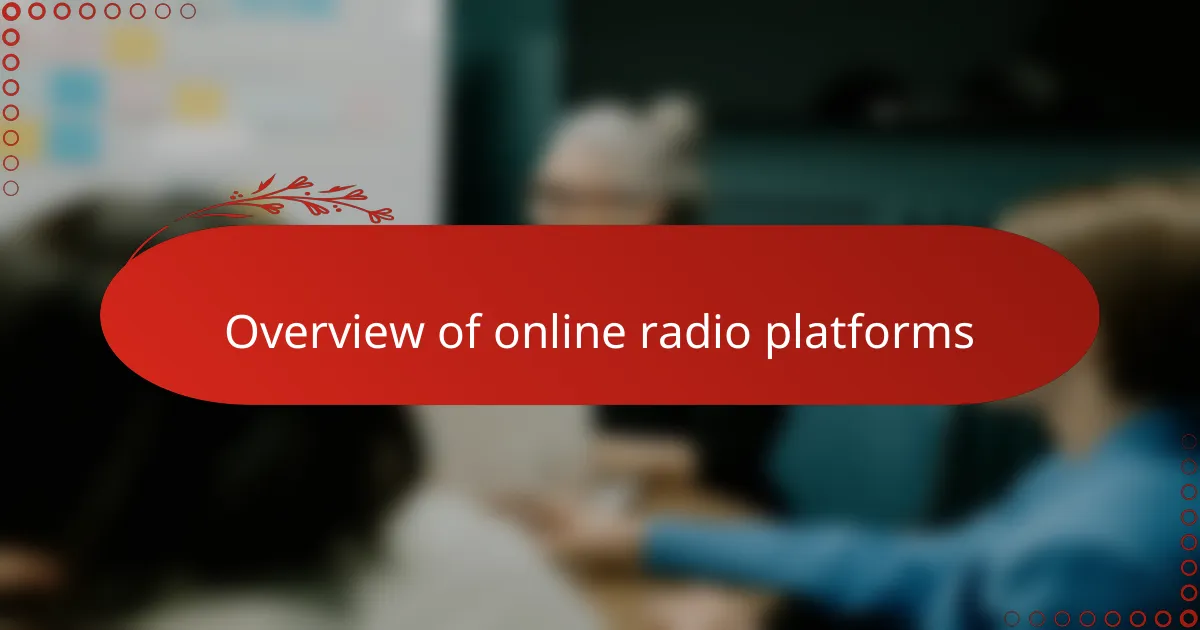
Overview of online radio platforms
Online radio platforms have transformed the way I approach broadcasting, offering a variety of spaces to share my voice beyond traditional airwaves. Have you noticed how easy it is now to start streaming from your laptop or phone? Platforms like Mixlr, Shoutcast, and Spreaker provide different tools that make reaching listeners feel both exciting and accessible.
What struck me most about exploring these platforms is the range of customization they offer. For example, some focus heavily on community interaction, while others prioritize sound quality or ease of use. This variety means there’s often a perfect fit depending on what kind of show you want to produce—and that was a big revelation for me when I was just starting out.
I remember feeling overwhelmed at first, trying to choose where to begin. But once I got into the groove, I realized these platforms don’t just host your show—they become part of your broadcast identity. It’s like having your own corner of the internet, where you can connect with listeners in real time with just a few clicks.
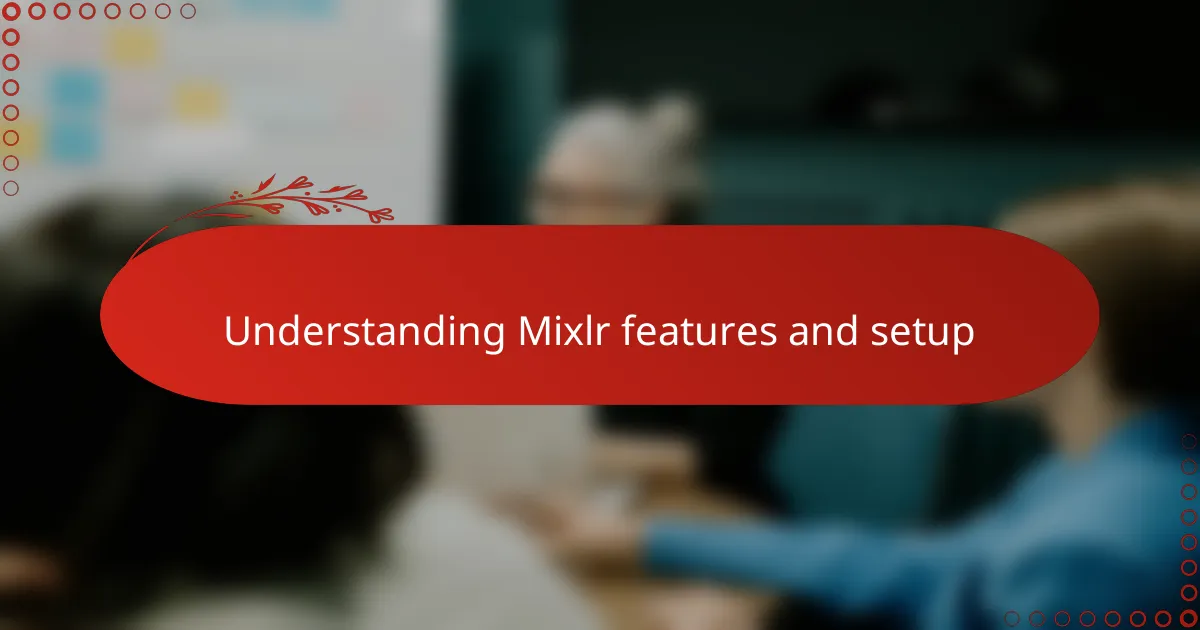
Understanding Mixlr features and setup
Mixlr’s interface surprised me with its simplicity and power. I quickly noticed how intuitive the setup process was—connecting my mic, adjusting volume levels, and customizing my stream took only minutes. Have you ever felt relief when a tool just works without a steep learning curve? That was exactly my experience.
One feature that really stood out was the real-time chat alongside the broadcast. It made me feel like I wasn’t just talking into the void but actually having a conversation with my listeners. This interactive element changed how I thought about engagement, turning passive listeners into active participants.
Setting up Mixlr also meant diving into its scheduling and recording options. At first, I underestimated how valuable these tools would be. But being able to pre-schedule my shows and save recordings gave me confidence and freedom, especially when balancing broadcasts with a busy life. I can’t stress enough how those features helped me build consistency and grow my audience.
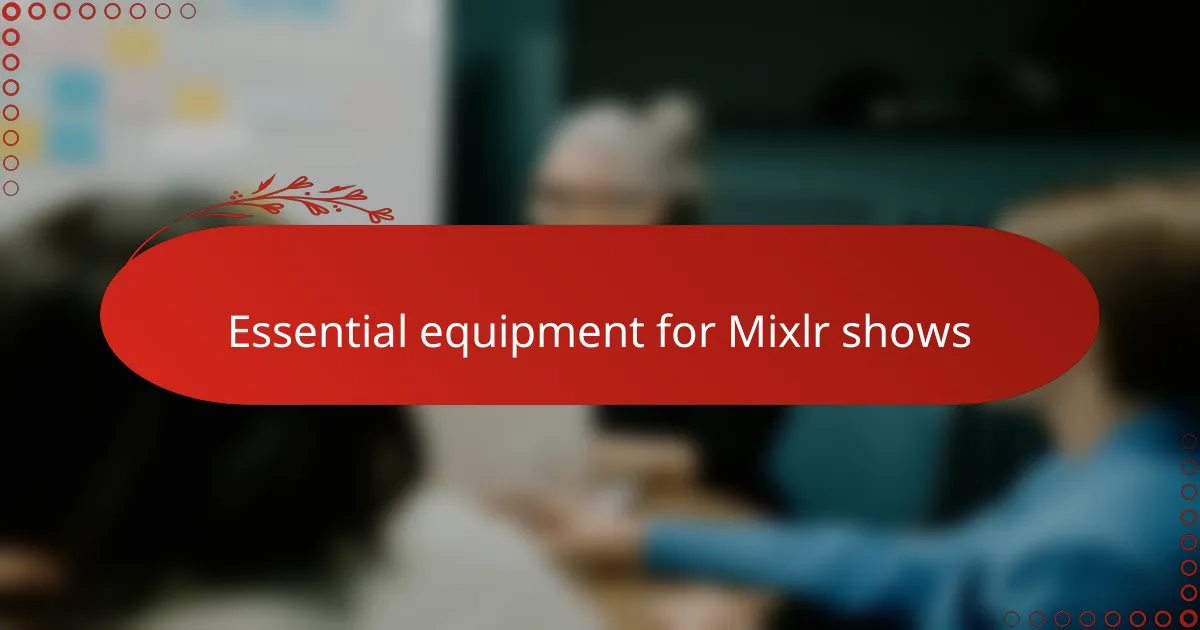
Essential equipment for Mixlr shows
When I started producing shows on Mixlr, the first thing I realized was that a good microphone is non-negotiable. Have you ever tried to listen to a show where the host sounds distant or tinny? It’s distracting, right? Investing in a quality mic made my voice clearer and helped me connect with listeners on a deeper level.
Next up, headphones became my steadfast companion during broadcasts. They aren’t just for hearing my own voice but for catching background noises and ensuring the sound balances just right. It’s amazing how much you can’t notice until you listen through headphones in real time.
Finally, I found that a reliable internet connection is the unsung hero of every Mixlr show. I learned the hard way that even the best equipment can’t save you from sudden dropouts or lag. Keeping my setup wired instead of relying on Wi-Fi made a huge difference in delivering a smooth, professional broadcast.
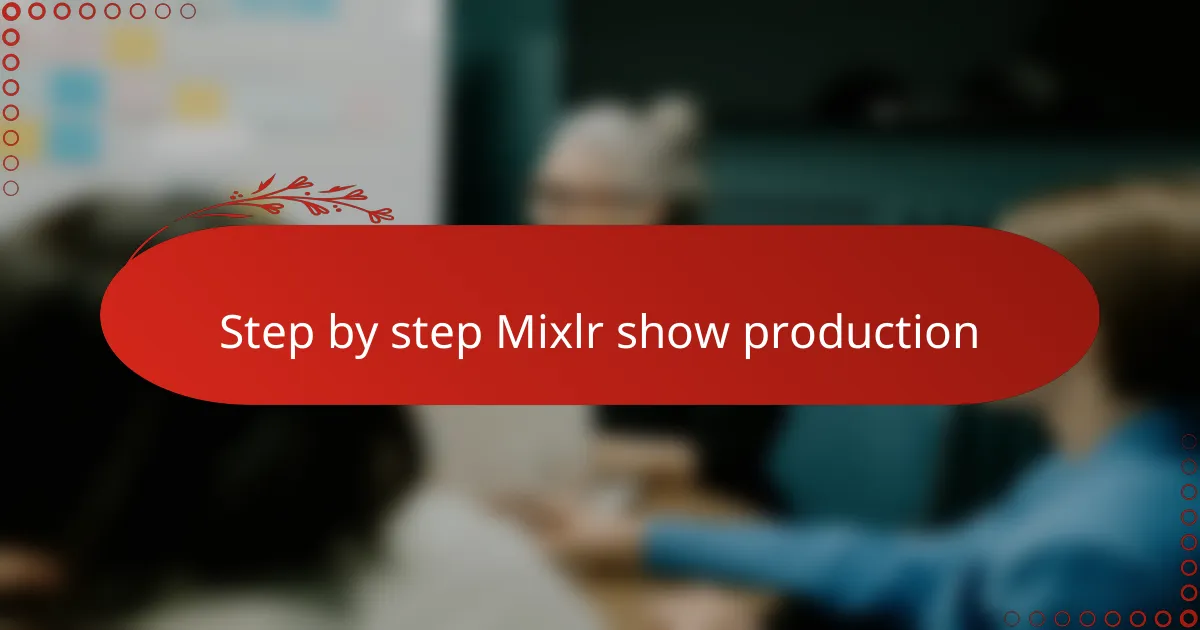
Step by step Mixlr show production
Producing a show on Mixlr became an organized rhythm for me once I broke it down step by step. First, I’d prepare my content—whether it was music, interviews, or commentary—and line up everything I needed well before going live. Have you ever found that having a clear plan transforms a chaotic recording session into something much smoother? That clarity made all the difference.
Next, I dove into Mixlr’s dashboard to set up the stream, making sure my mic levels were perfectly balanced before hitting broadcast. Sometimes I’d do quick test runs to catch any glitches or background noise—because nothing kills the vibe faster than technical hiccups. It felt empowering to troubleshoot on the fly and know I could deliver a clean, uninterrupted show.
Finally, engaging with listeners during the broadcast became part of my ritual. I’d glance at the chat and respond whenever I could, turning the show into a real conversation rather than a one-way monologue. This interaction brought a sense of community that made every episode feel special, like inviting friends into my personal studio. Have you noticed how that live feedback changes the energy in the room? It certainly shaped how I approached each broadcast.
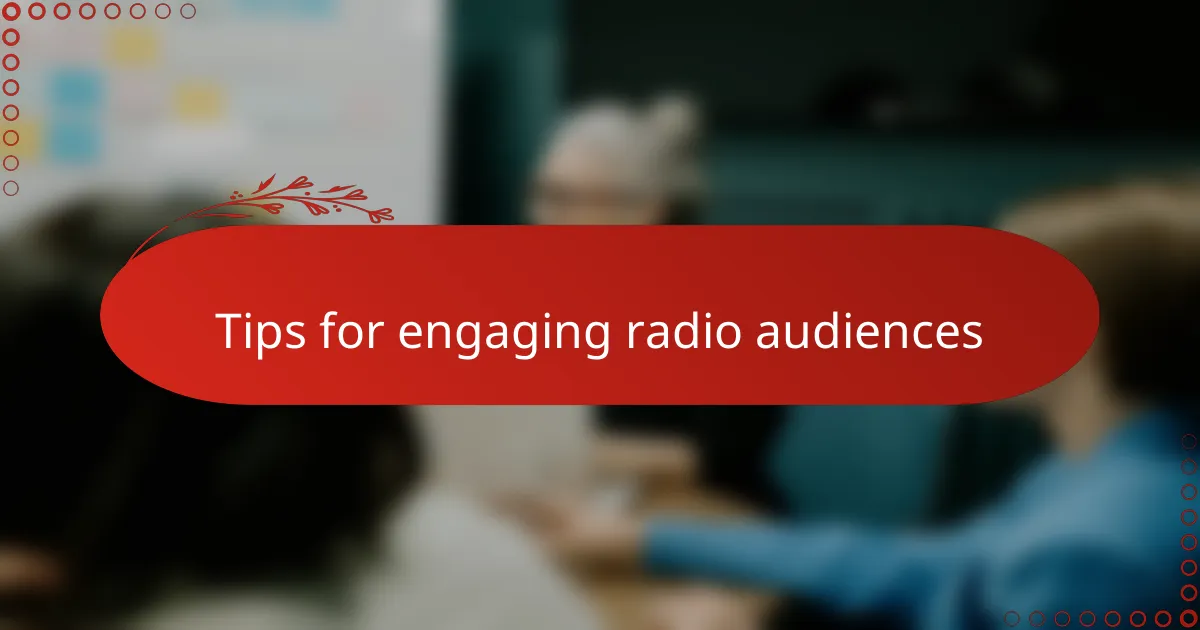
Tips for engaging radio audiences
One thing I quickly learned about engaging radio audiences is the power of storytelling. Have you ever noticed how a well-told story can make listeners feel like they’re right there with you? For me, weaving personal experiences or vivid descriptions into a show creates an emotional connection that keeps people tuning in.
Another tip that made a huge difference was embracing natural pauses and changes in tone. It’s tempting to fill every moment with words, but sometimes silence speaks louder. I found that these rhythms give listeners space to reflect and anticipate what’s next, which makes the broadcast feel more intimate and less scripted.
Lastly, involving the audience through real-time interaction changed everything. Responding to chat messages or even giving shout-outs made listeners feel seen and valued. Have you ever felt that spark when a host acknowledges you by name? That sense of community is what turns casual listeners into loyal fans, and it’s something I strive to cultivate every time I go live.
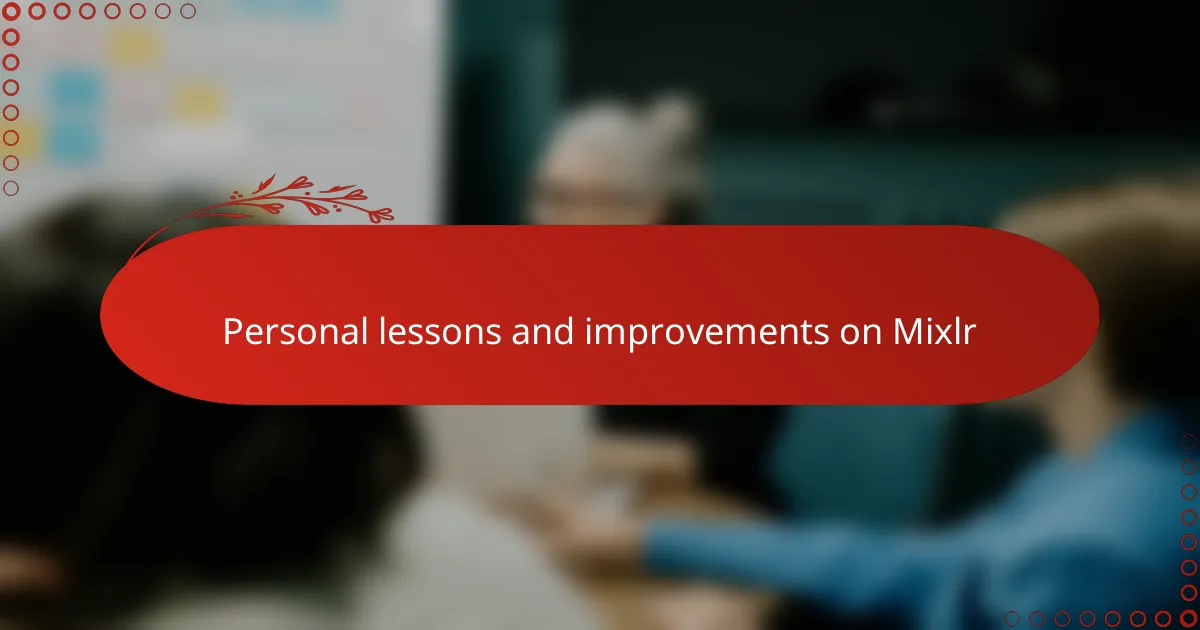
Personal lessons and improvements on Mixlr
At first, I underestimated how much patience and experimentation producing on Mixlr would require. Have you ever thought that just hitting “go live” would be enough? I quickly learned that fine-tuning audio levels and adjusting my pacing were ongoing processes—each show gave me new insights into what worked and what didn’t.
One of the biggest changes I noticed was in my confidence behind the mic. Early broadcasts felt stiff, but over time, I started embracing the platform’s interactive features, which made the experience feel less one-sided. Responding to listener chats not only improved engagement but also helped me relax and speak more naturally.
I also realized the value of reviewing my recordings after each show. Listening back to myself sometimes felt awkward, but it was a goldmine for spotting small mistakes and areas to improve. That practice transformed my production quality and made me more intentional in crafting content for future broadcasts.
